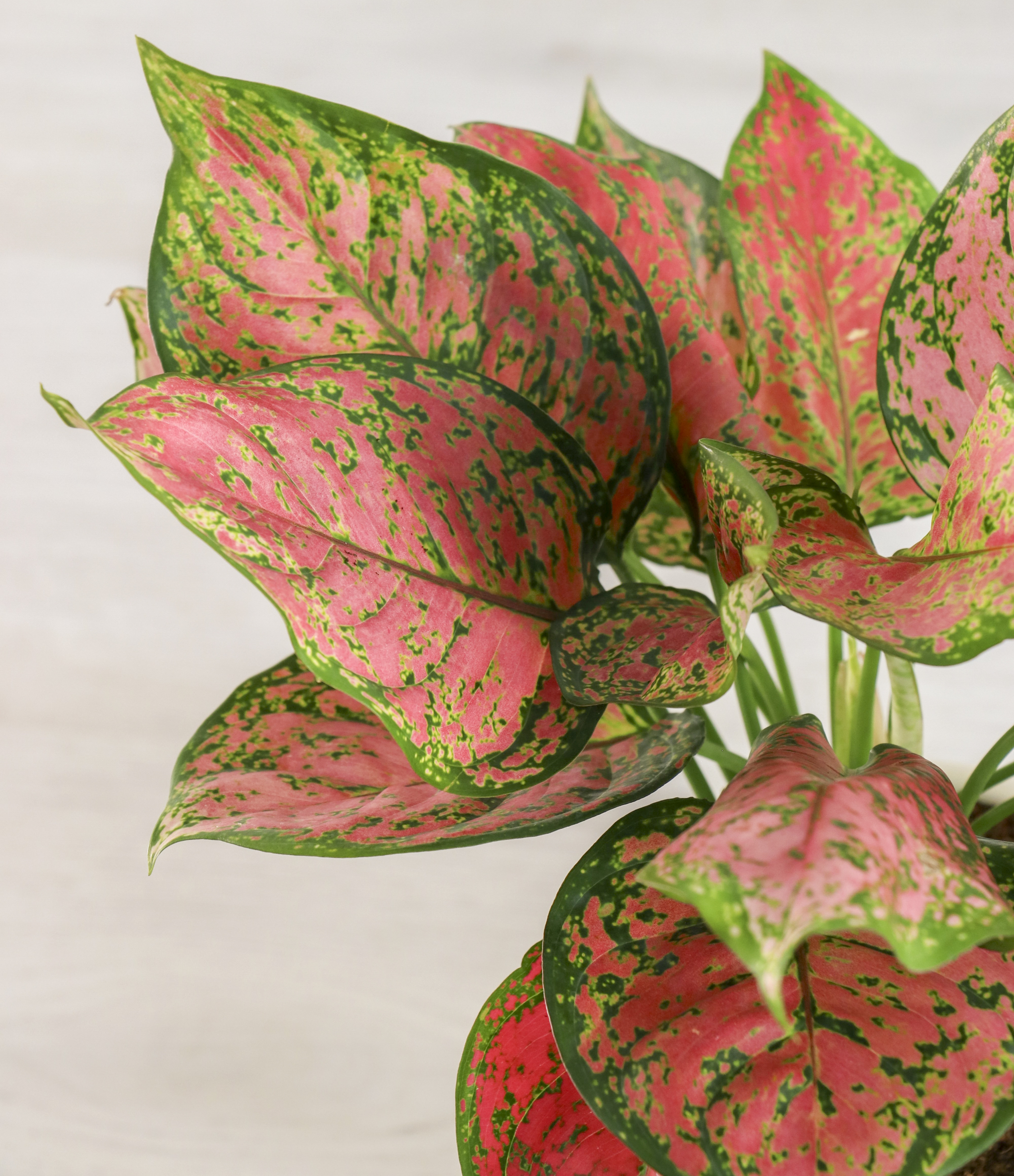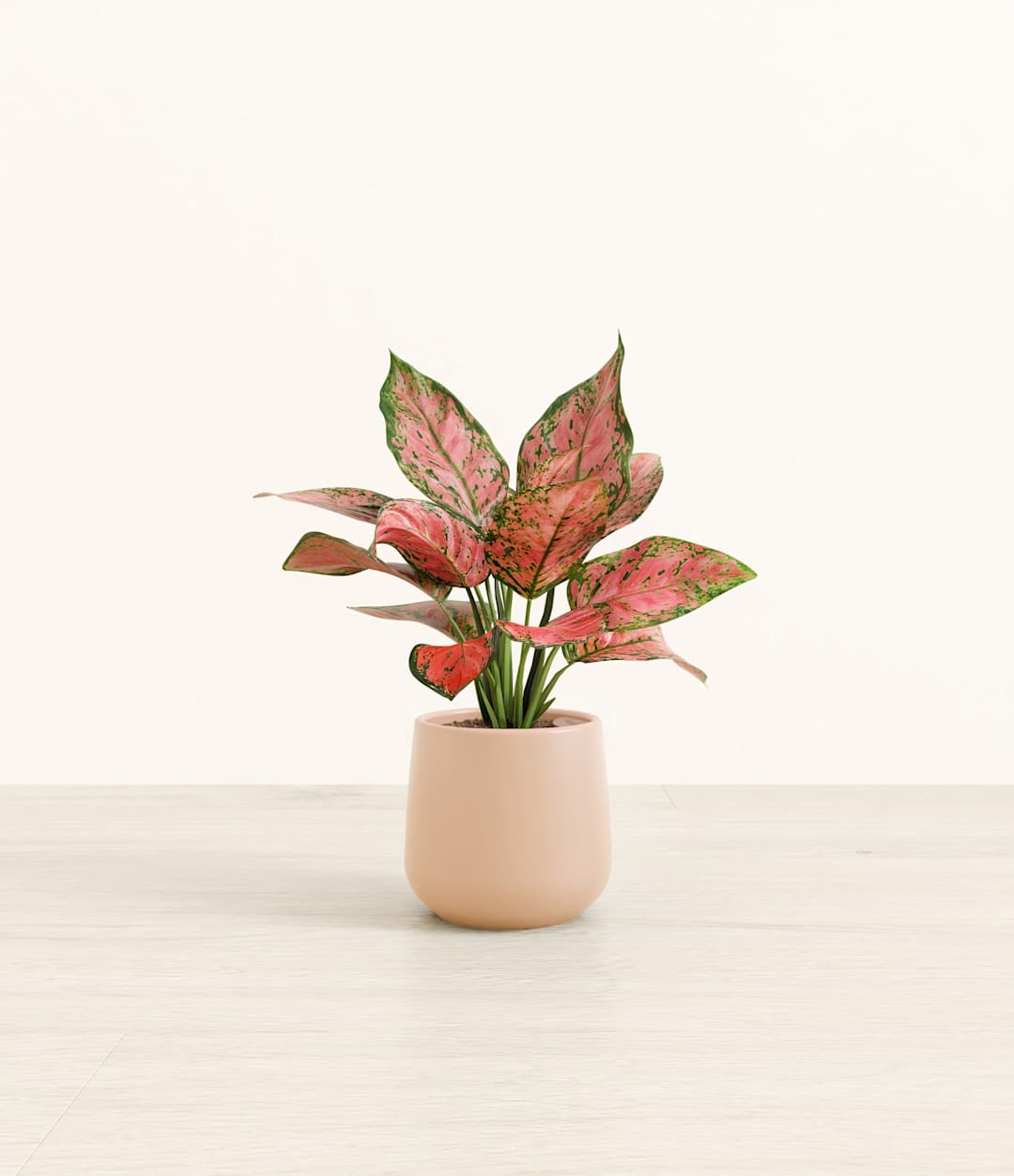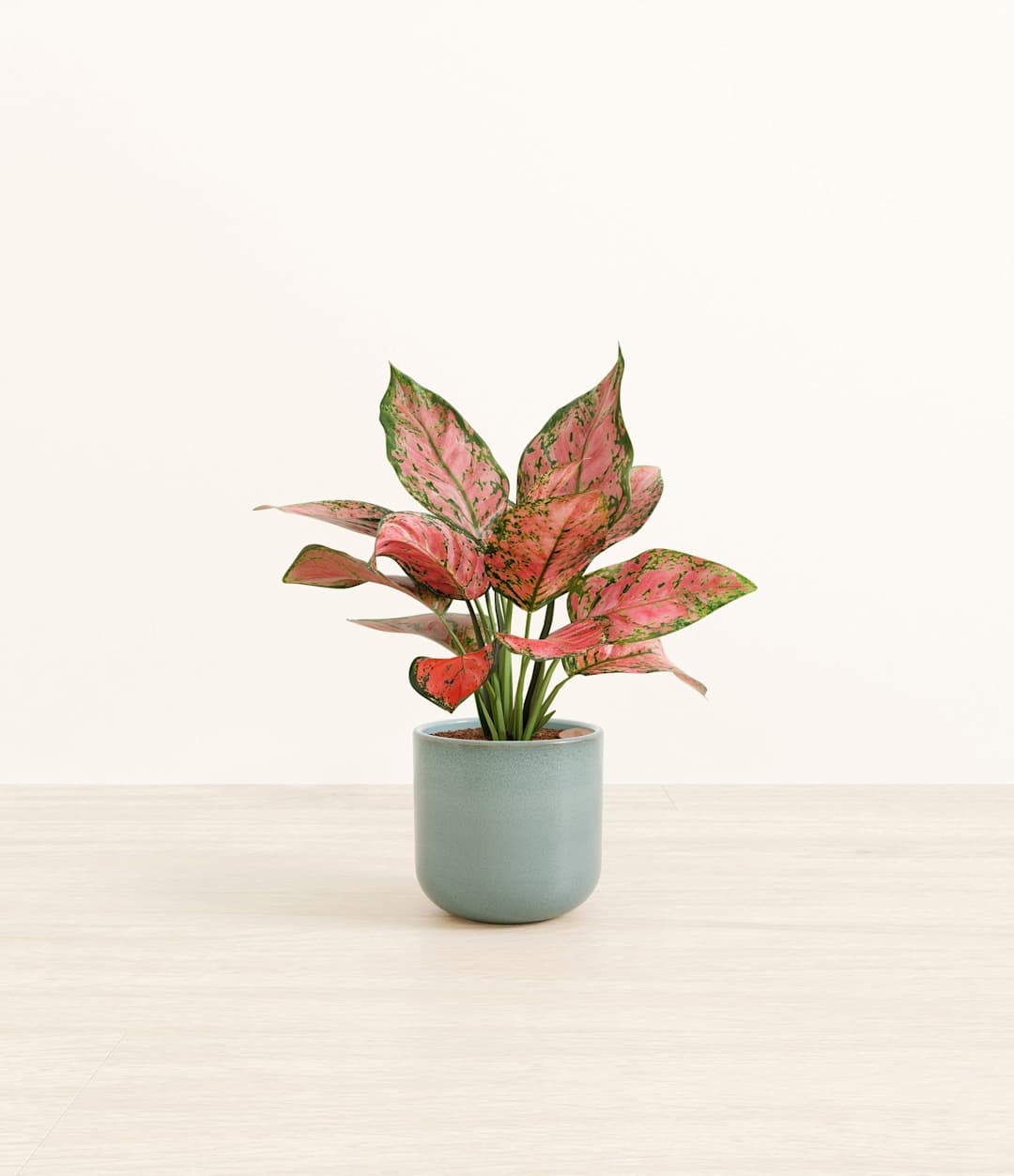How to Care for an Aglaonema Red Star
Shop this plantAbout Aglaonema Red Star
Native to Southeast Asia’s tropical forests, the Aglaonema Red Star (also known as the Pink Chinese Evergreen) is a stunning indoor plant that stands out with its vibrant pink foliage and subtle green accents. This striking plant effortlessly enhances any space, bringing both colour and a sense of tranquility. Beyond its beauty, the Aglaonema Red Star is a resilient houseplant that thrives with minimal care, making it a perfect addition for plant enthusiasts of all levels.
Other common names
- Valentine Aglaonema
- Red Aglaonema
- Pink Anyamanee
- Aglaonema Thai Pink
How Often Should I Water My Aglaonema Red Star?
With easyplant’s self-watering system, caring for your Aglaonema Red Star is effortless. Simply check the easyplant reservoir once a month and top it up when it’s empty!
Aglaonema Red Star Light Needs
Aglaonema Red Star thrives in bright, indirect light. It’s best to avoid low-light areas, rooms without natural light, and direct sunlight, which can scorch the leaves.
The perfect location is near an east-facing window or somewhere with filtered light from a west or south-facing window.
Aglaonema Red Star Plant Care
When your Aglaonema Red Star first arrives, its leaves might look a little droopy. Don’t worry; this is completely normal. After being confined in a box, it just needs a bit of time to adjust to its new surroundings. With its lush green base variegated with lighter green or creamy patterns, this plant is a real showstopper. To keep it growing evenly, give the pot a quarter turn every month so all sides get their fair share of light. Regular maintenance of the leaves is also crucial. Gently wiping them with a damp cloth helps with light absorption and keeps your plant looking its best. This care routine ensures your Aglaonema Red Star remains an attractive and vibrant presence in your indoor plant collection. With a bit of attention, it will soon perk up and bring a touch of tropical charm to your home.
How Big Will My Aglaonema Red Star Grow?
Aglaonema Red Star has a compact, bushy growth habit, usually reaching around 60-90 cm in both height and width. Its growth is moderate, making it ideal for a range of indoor spaces without the concern of it growing too quickly.
Temperature & Humidity
Aglaonema Red Star flourishes in typical indoor temperatures between 18°C and 24°C. It prefers a warm, stable environment, so keep it away from chilly drafts. While it adapts well to average indoor humidity, it will appreciate a bit more moisture in the air. You can easily achieve this by grouping it with other plants, using a humidifier, or placing a pebble tray with water nearby.
Is Aglaonema Red Star Toxic for Pets & Children?
Aglaonema Red Star contains substances that can be harmful if ingested by pets or children. This may cause mild irritation to the skin or mouth, slight swelling, or difficulty swallowing. While this plant adds a beautiful touch to any room, it's best to keep it out of reach of curious pets and little ones for their safety.
Troubleshooting Common Problems with Aglaonema Red Star
If you notice the lower leaves of your Aglaonema Red Star turning brown, don’t be alarmed, it’s simply part of the plant’s natural ageing process. Just wait for the leaves to loosen, then remove them gently to make room for new growth. If you spot yellowing, spots, or notice dry stems, it could indicate pests or disease. Keep the leaves clean by wiping them down with a damp cloth to help prevent these issues. This will not only keep pests away but also assist with better photosynthesis.
If you see the leaves starting to scorch or curl, it may be getting too much direct sunlight. Aglaonema Red Star prefers bright, indirect light, so moving it to a spot with diffused light can make all the difference. When it comes to watering, ensure the top layer of soil dries out between waterings, especially if you're not using an easyplant pot. Overwatering is a common culprit of root rot, so take care, particularly during the cooler winter months when the plant’s growth slows down.
Remember, your Aglaonema Red Star may take a little time to show what it needs, but with some attention and care, you'll be able to troubleshoot any issues and keep your plant looking its best.
Frequently Asked Questions about Aglaonema Beauty Plant
- What type of light does Aglaonema Red Star need?
Aglaonema Red Star thrives in bright, indirect light but is adaptable enough to grow in medium to low-light areas as well. To keep its vibrant foliage, it’s best to avoid placing it in direct sunlight for extended periods.
- Is Aglaonema Red Star toxic to pets and kids?
Yes, Aglaonema Red Star is toxic if ingested, potentially causing irritation in the mouth and digestive upset. To keep your loved ones safe, make sure to keep this plant out of reach of pets and young children.
- How often should I water my Aglaonema Red Star?
With easyplant, simply fill the reservoir once a month for optimal watering. If you’re not using an easyplant pot, water your Aglaonema Red Star every 1-2 weeks, ensuring the top 2.5 cm of soil is dry before you water again.
- How to troubleshoot problems with Aglaonema Red Star?
If your Aglaonema Red Star is showing signs of distress, start by checking its light and water conditions. It prefers indirect light and evenly moist soil. Yellowing leaves may indicate overwatering or too much direct sunlight, while curling leaves could point to underwatering or low humidity.


